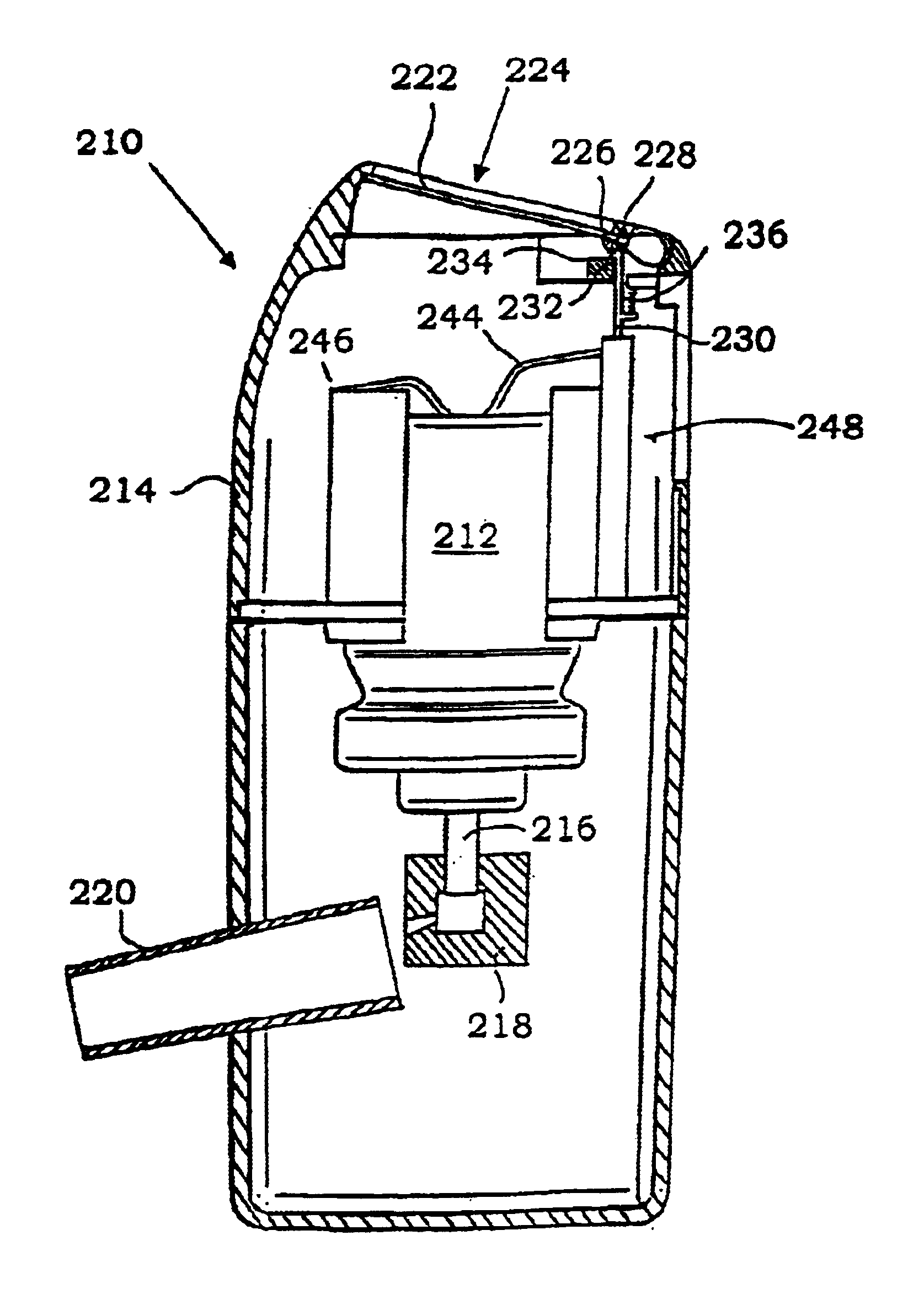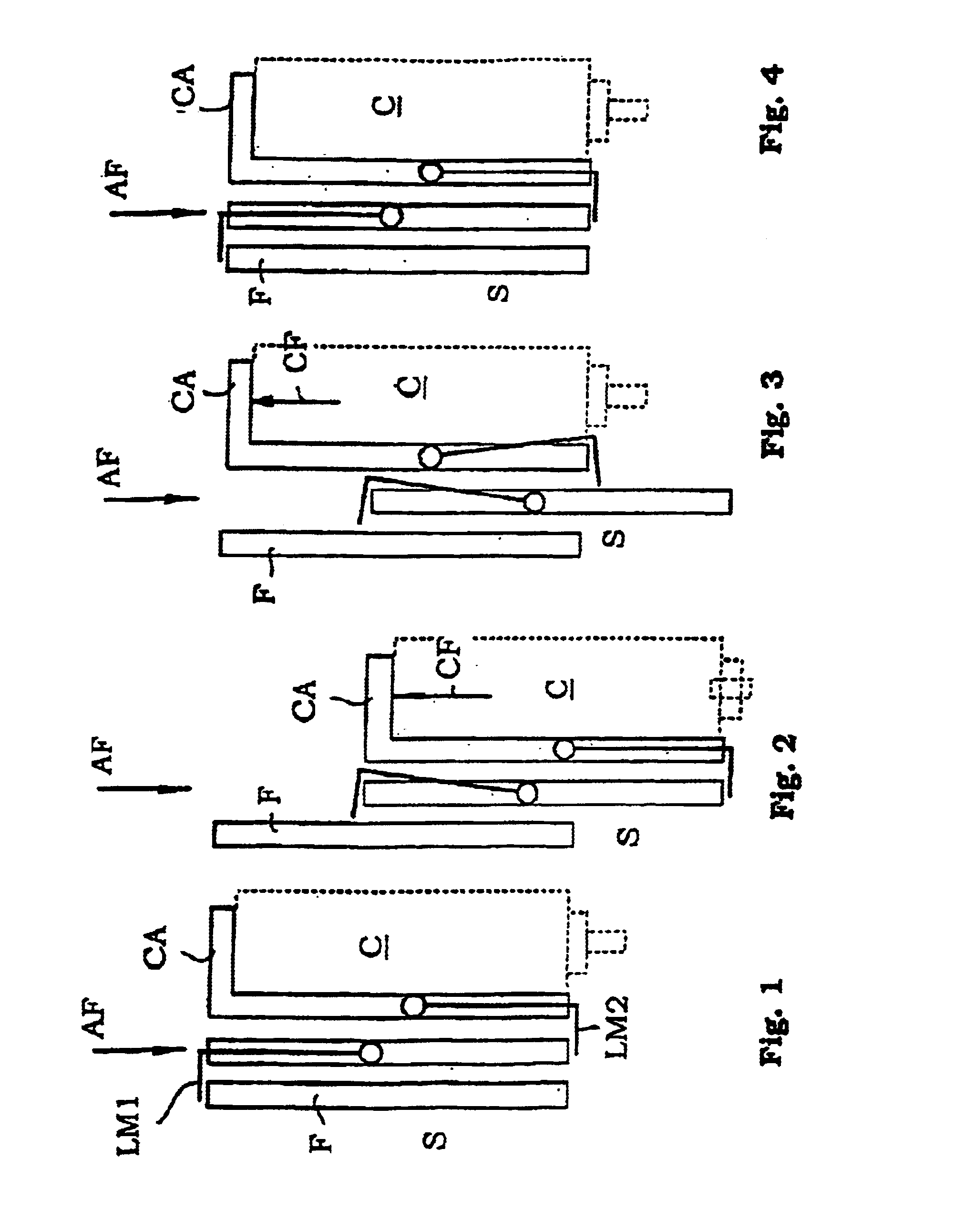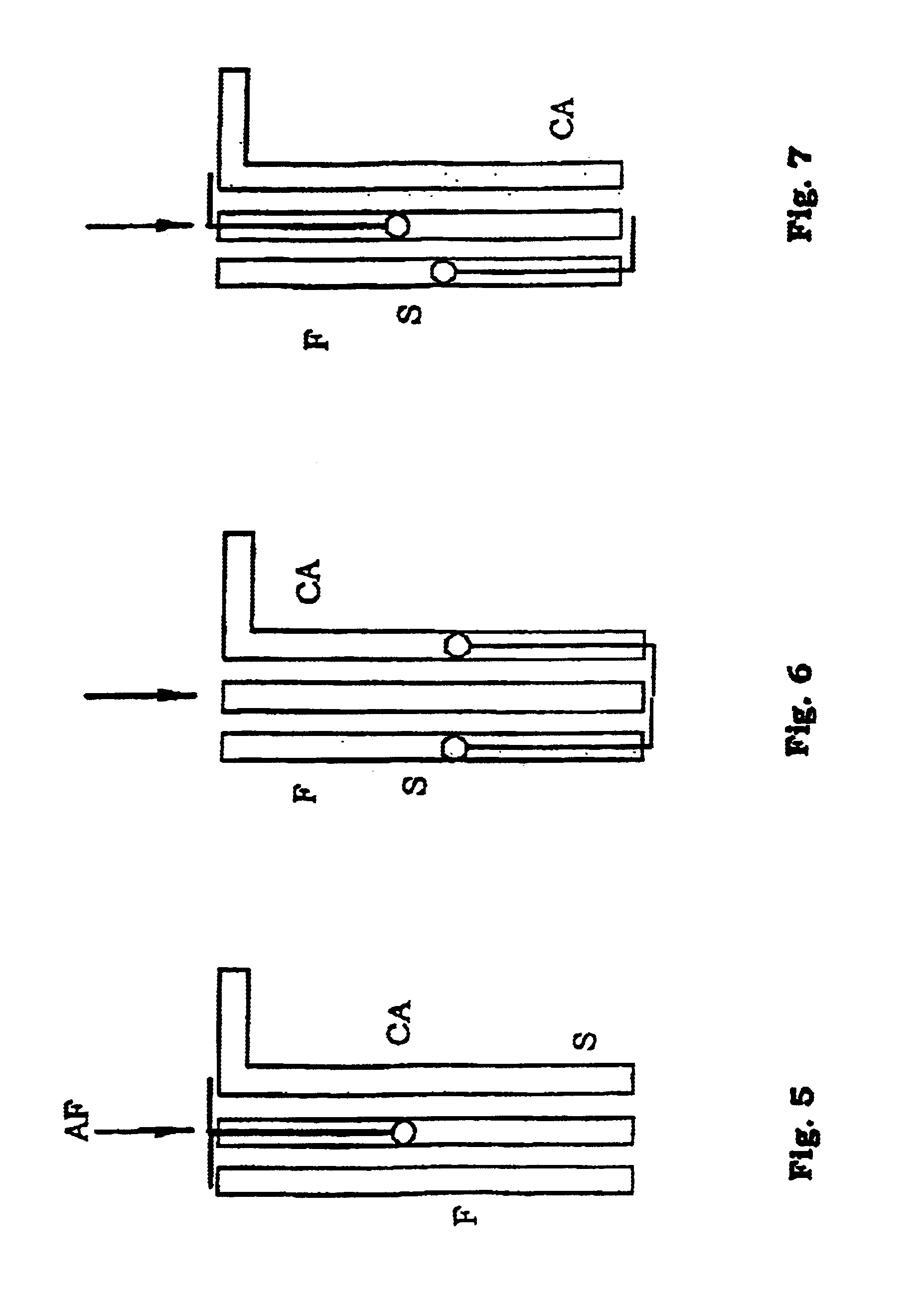The drawback of the patient activated inhalers is that it may be difficult for some persons to activate the inhaler and inhale at the same instant.
If these actions are not quite synchronised, the patient receives an inadequate amount of medicament into the
respiratory tract.
This causes the canister to be depressed and deliver its metered dose.
One problem with these inhalers is that the canister remains depressed until the patient physically intervenes and removes the pressure on the canister.
The chamber may not be refilled completely with these types of inhalers, especially when the amount remaining in the canister is low, because the user may hold the canister of the inhaler in a non-vertical position during the action activating / refilling of the inhalers metered dose chamber.
Another problem with some breath-activated inhalers is that the inhaler allows for the canister to be compressed for substantial periods of time, resulting in reduced functionality of the valve mechanism.
One problem associated with the above inhaler is that the device controls the opening time of the canister, i e the time the canister is depressed, in order to insure that the whole dose is delivered.
But repeated use, and time itself, will likely change the properties of the viscoelastic element so that the opening time varies.
If shorter, the whole metered dose will not be delivered to the patient, with a deteriorated
inhalation quality as a consequence due to doses delivered that are inadequate to the patient.
If the level of medicament then is low an inadequate refill of the chamber is obtained, as described above, and the patient does not receive its correct medicament during the subsequent
inhalation.
A general problem with the known inhalers is that there is no possibility of monitoring or controlling the inhalation quality of the patient, and from that obtain an indication on the medication, since only the start of the inhalation activates the device.
This means that a stem of the canister has to be pushed into the canister against the
spring force of the stem and against the friction caused by the seals around the stem.
Firstly the needle has to be pushed into the patient.
For most medical devices this is not acceptable because the activation should occur within a relatively narrow, well-defined force range.
The strive to keep the number of component down and working with high tolerance requirements gives a rather costly device, by which it even so is difficult to manage all conditions.
The above mentioned problems are also very much pronounced with some devices, such as multiple automatic functions acting in sequence of each other, with long and / or multiple energy systems where it is important that the forces required for triggering the different actuating means are certain to be provided without over-
dimensioning the activating means.
Otherwise, either it is not certain that the different functions are able to sequentially trigger each other or the device will be unnecessarily bulky and difficult to use.
This co-ordination of actions from the patient often causes problems so that, if the patient do not co-ordinate properly, the patient may not receive an adequate dose of medicament.
A drawback with the above described devices is that the breath-activated devices may unintentionally be triggered when the inhaler is ready for inhalation if the inhaler is dropped or otherwise exposed to sudden forces.
A number of doses important to the patient could be lost in this way.
The medicament delivered inside the inhaler may deposit in passage ways or mechanisms of the inhaler and possibly obstruct the function or rendering the inhaler unclean.
In context with inhalers with automatic recharging means, an unintended triggering of the inhaler may also lead to an improper filling of the metered dose chamber if for example the inhaler is held in such a position during recharging that the medicament cannot properly fill the chamber.
The improper filling of the metered dose chamber leads to an improper dose delivered to the patient at the subsequent inhalation.
Since the general aim for the developer of the inhaler is to keep the overall size as small as possible so that the inhaler is handy and discrete in use, the space inside the inhaler is rather limited.
Especially when working with spring activating means it is not possible to use long springs in order to obtain a more or less constant spring characteristics during the depression movement of the canister.
With such tolerance widths, either the activating means will have to move quite a distance before coming in contact with a small canister, and thus exposing the canister to sudden impacts from the activating means, or, in the case of a large canister, that the activating means still contains a lot of energy when the canister is depressed.
Since the starting point for the activating means varies so much with the tolerance widths built into the
system and with the limited space available in the inhaler, it is very difficult to
handle such differences and to design an activating means acting with the same predictable characteristics over this span.
A drawback with these breath activated inhalers is unintentional or accidental activation of the inhaler, especially by children.
Since these medicaments sometimes are quite potent, or even lethal, there is a risk that the child will suffer from poisoning which could lead to serious consequences.
A drawback with the
capsule is that it is very easy to drop or loose it.
The general problem with the above inhalers is that the
mouthpiece is fixedly attached to the inhaler body, making them rather bulky.
 Login to View More
Login to View More  Login to View More
Login to View More 


